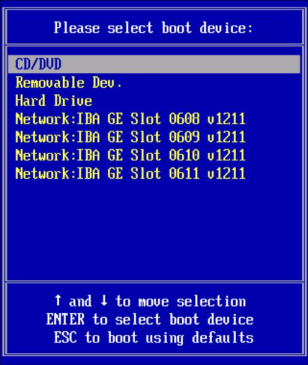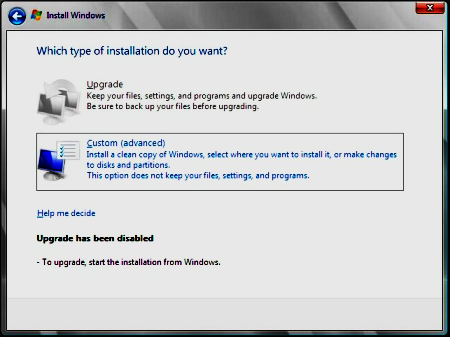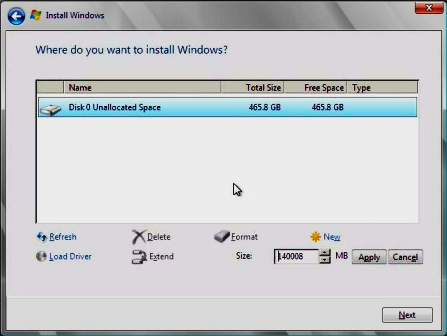| Skip Navigation Links | |
| Exit Print View | |

|
Sun Fire X4800 Server Product Documentation |
Introduction to Windows Installation
Windows Installation Task Overview
Getting Started With the Windows Server 2008 Installation
Supported Windows Operating Systems
Windows Server 2008 Installation Considerations
Differences Between the Windows Server 2008 R2 and SP2 Installation Procedures
Selecting a Media Delivery Method
Windows Media Delivery Methods
Oracle Hardware Installation Assistant
Oracle Hardware Installation Assistant Task Overview
Obtaining Oracle Hardware Installation Assistant
How to Download Server Software
How to Set Up the JavaRConsole System
Installing Windows Server 2008
How to Install Windows Server 2008 Using PXE
Updating Critical Drivers and Installing Supplemental Software
Installing Critical Device Drivers
How To Install Server-Specific Device Drivers
Installing Supplemental Software
How to Install the Supplemental Software
Managing RAID Using the MegaRAID Storage Manager
Configuring Support for the Trusted Platform Module
Incorporating Device Drivers into WIM Images for WDS
Location of Device Drivers on Tools and Drivers DVD
Device Drivers to Incorporate Into WIM Images
Prerequisites and Task Overview for the Device Driver WIM Images
Incorporating Drivers Into the WIM Image
How to Create an ImageUnattend.xml Setup Script
Add Device Driver to the Boot WIM (Windows Server 2008 SP2 Only)
Map ImageUnattend.xml Setup Script to Windows Server 2008 Install Image
Downloading the ISO Image for the Tools and Drivers DVD
Identifying Network Interfaces in Windows
How to Determine the Server's Active Network Data Ports
How to Confirm Physical Port MAC Addresses and Map Them to Windows Device Names
Before You Begin
Before beginning the operating system installation, make sure that the following requirements are met:
If you want to configure your boot drive for RAID1 (mirroring), you need to do so using the LSI Logic integrated RAID controller’s setup utility (accessible by pressing Ctrl+C when prompted during server boot) before you install the Windows operating system. For more details, refer to the Sun LSI 106x RAID User’s Guide.
For your chosen Windows media delivery method, refer to the following requirements table.
|
If you are using the Windows Remote or Windows Image method, you can do this through ILOM.
The BIOS POST process begins.
The BBS POPUP menu allows you to select a boot device.
Note - BIOS POST messages, including the prompt for the BBS Popup menu, can go by quickly, and you might miss them. If so, power cycle the server and hold down the F8 key during boot until the BBS Popup menu (shown in Step 3) appears.


If prompted with Press any key to boot from CD, quickly press any key.
The Windows installation wizard starts.


Note - For Windows Server 2008 SP2, the mass storage driver is not installed. The driver must be accessible through a connected CD/DVD or USB flash drive. If the driver is not accessible, the disk is not visible as shown in the previous figure. To add the driver to the boot WIM, see Add Device Driver to the Boot WIM (Windows Server 2008 SP2 Only).
 | Caution - Formatting or re-partitioning a pre-existing partition destroys all data on the partition. |
To select the Windows default partition settings, click Next. You are taken to Step 8.
To override the Windows default partition settings, click Driver Options (advanced) and proceed to the Advanced Driver Options screen in the next step.

The Windows installation begins. The server reboots multiple times during the installation process.
Note - Windows Server 2008 R2 enforces password schemes for user accounts. Password standards include restrictions on length, complexity, and history. By default, the password must have 8 characters, with one number and one uppercase character. For more details, click the Accessibility link on the account creation screen.
Once you have created your initial account, the Windows Server 2008 desktop appears. The Windows Server 2008 R2 interface is new; review the Microsoft documentation to familiarize yourself with the changes.
See Also
Updating Critical Drivers and Installing Supplemental Software.